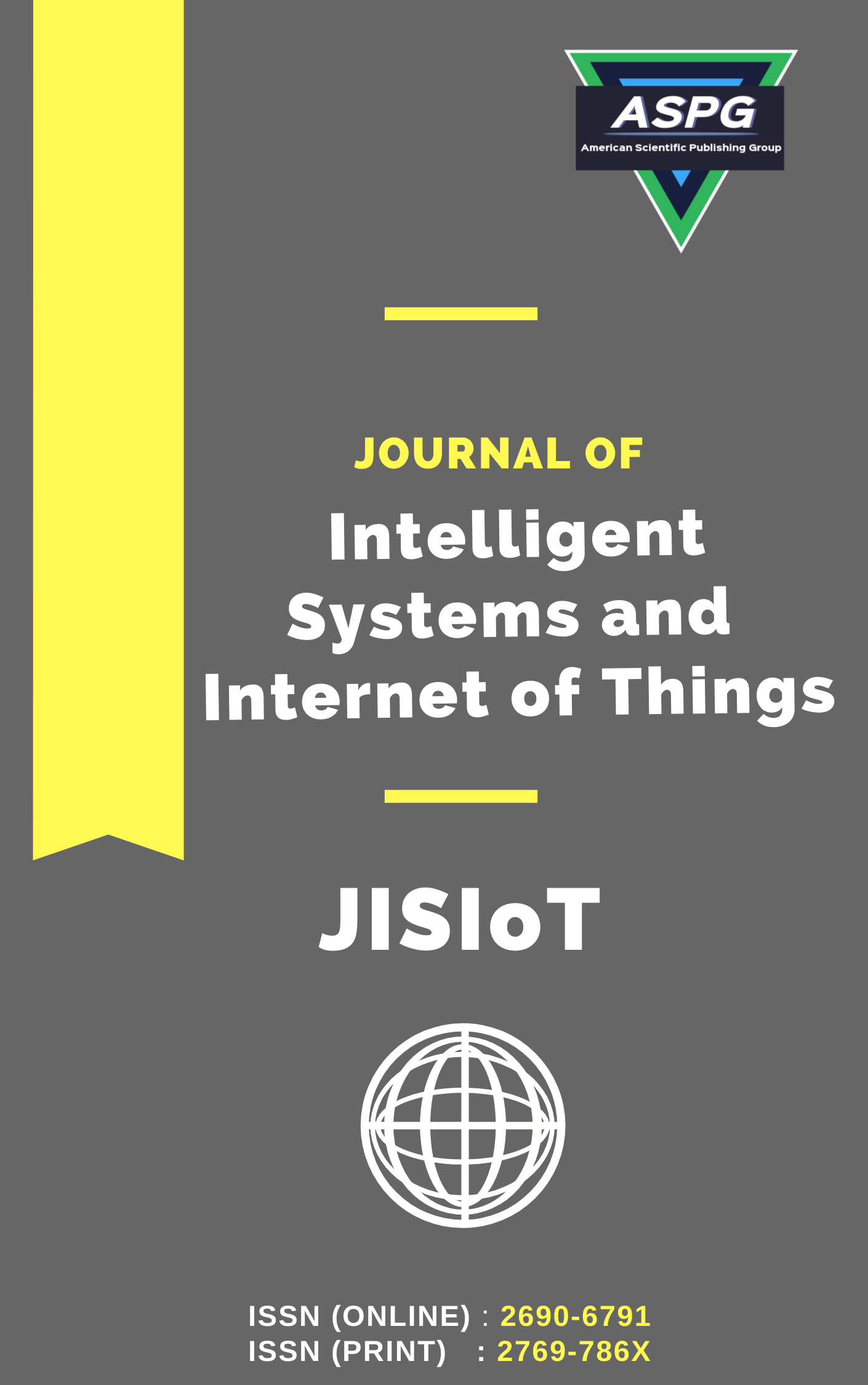

Volume 18 , Issue 1 , PP: 250-259, 2026 | Cite this article as | XML | Html | PDF | Full Length Article
M. Prema Kumar 1 * , P. Chinnasamy 2 , B. Bala Abirami 3 , Juvvala Sailaja 4 , S. Bhuvana 5 , Sai Krishna Vunnam 6
Doi: https://doi.org/10.54216/JISIoT.180119
Advancements in Unmanned Aerial Vehicles (UAVs), popularly identified as drones, offer unprecedented opportunities to improve various applications of Extensive Internet of Things (IoT). In this framework, Deep Learning (DL) techniques are considered a practical alternative for improving the real-time obstacle detection and avoidance performance of fully autonomous UAVs. This research propose novel technique in urban environment climate change detection utilizing UAV image based on cloud IoT with deep learning model. Here the UAV images has been collected through cloud IoT module and prepared for dataset. This dataset with UAV images has been processed for filtering and contour reduction by normalization. Then processed image features are extracted utilizing graph cut fuzzy convolutional ResNet attention neural network with moath firefly sparrow colony optimization model. The simulation results has been analyzed for various UAV dataset in terms of training accuracy, average precision, recall, QoS, scalability. Proposed technique Average precision of 97%, QOS of 92%, SCALABILITY of 96%, training accuracy of 98%, RECALL of 95%.
Urban environment , Climate change detection , UAV image , Cloud IoT , Deep learning model
[1] S. N. Mohanty et al., "UAV databased temperature patterns analysis with carbon emission detection using deep neural network," Remote Sens. Earth Syst. Sci., pp. 1–12, 2024.
[2] D. Hernández, J. C. Cano, F. Silla, C. T. Calafate, and J. M. Cecilia, "AI-enabled autonomous drones for fast climate change crisis assessment," IEEE Internet Things J., vol. 9, no. 10, pp. 7286–7297, 2021.
[3] A. Bouguettaya, H. Zarzour, A. Kechida, and A. M. Taberkit, "Deep learning techniques to classify agricultural crops through UAV imagery: A review," Neural Comput. Appl., vol. 34, no. 12, pp. 9511–9536, 2022.
[4] F. A. Almalki and M. C. Angelides, "Autonomous flying IoT: A synergy of machine learning, digital elevation, and 3D structure change detection," Comput. Commun, vol. 190, pp. 154–165, 2022.
[5] T. Mollick, M. G. Azam, and S. Karim, "Geospatial-based machine learning techniques for land use and land cover mapping using a high-resolution unmanned aerial vehicle image," Remote Sens. Appl.: Soc. Environ., vol. 29, p. 100859, 2023.
[6] M. Sailaja, M. P. Kumar, B. S. Jyothi, G. L. N. Vanguri, S. Manjula, and D. D. Priya, "Remote Sensing–Based UAV Imaging in Heat Pattern Analysis Impact on Climate Change Detection Using Fuzzy Stacked Lasso Elastic Net Model," Remote Sens. Earth Syst. Sci., vol. 7, pp. 699–708, Oct. 2024.
[7] M. Durairaj et al., "Sustainable Agriculture-Based Climate Change Training Models using Remote Hyperspectral Image with Machine Learning Model," Remote Sens. Earth Syst. Sci., pp. 1–10, 2024.
[8] F. Zennaro et al., "Exploring machine learning potential for climate change risk assessment," Earth-Sci. Rev., vol. 220, p. 103752, 2021.
[9] I. Stamatopoulos, T. C. Le, and F. Daver, "UAV-assisted seeding and monitoring of reforestation sites: a review," Aust. For., vol. 87, no. 2, pp. 90–98, 2024.
[10] A. D. Mate et al., "Marine Life Analysis Based on Ocean Water Level Rise and Climate Change Using Underwater Imaging Techniques," Remote Sens. Earth Syst. Sci., pp. 1–13, 2024.
[11] V. Sharma, E. Honkavaara, M. Hayden, and S. Kant, "UAV remote sensing phenotyping of wheat collection for response to water stress and yield prediction using machine learning," Plant Stress, vol. 12, p. 100464, 2024.
[12] W. Zhu et al., "UAV flight height impacts on wheat biomass estimation via machine and deep learning," IEEE J. Sel. Topics Appl. Earth Observ. Remote Sens., 2023.
[13] S. Arunmozhiselvi, T. A. Kumar, P. M. Bala, S. Usharani, and G. Glorindal, "A systematic approach to agricultural drones using a machine learning model," in Machine Learning Approaches and Applications in Applied Intelligence for Healthcare Data Analytics, CRC Press, 2022, pp. 41–60.
[14] D. Rolnick et al., "Tackling climate change with machine learning," ACM Comput. Surv, vol. 55, no. 2, pp. 1–96, 2022.
[15] X. Deng, Y. Zhang, and H. Qi, "Towards optimal HVAC control in non-stationary building environments combining active change detection and deep reinforcement learning," Build. Environ, vol. 211, p. 108680, 2022.
[16] C. B. Pande, "Land use/land cover and change detection mapping in Rahuri watershed area (MS), India using the google earth engine and machine learning approach," Geocarto Int., vol. 37, no. 26, pp. 13860–13880, 2022.